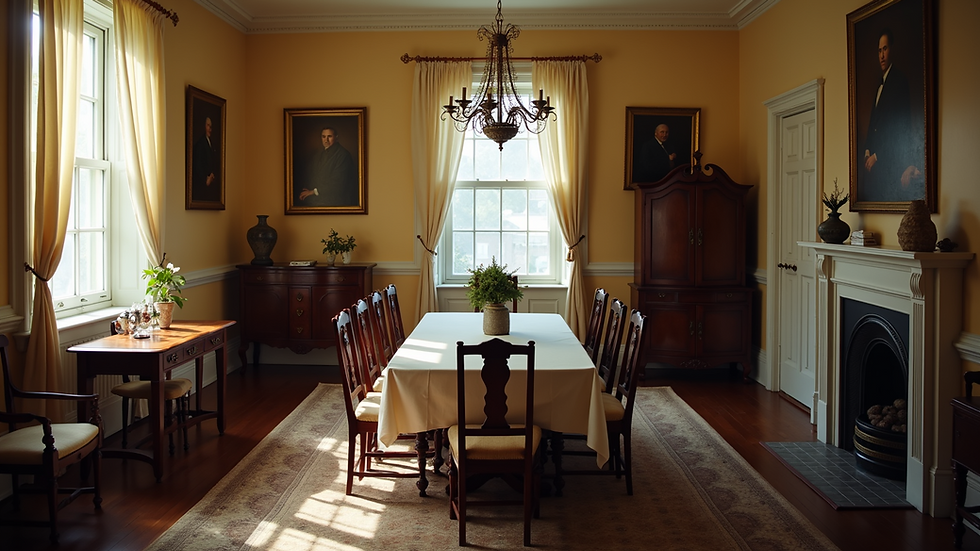Unlocking the Power of Words: Why Your Interiors Crave More than Just Pictures
- Journalising Designers
- Aug 10
- 3 min read
In the world of interior design, captivating visuals often steal the spotlight. A beautifully arranged space can spark emotions and inspire creativity. However, while images are striking, they are not the only tools in the decorator’s arsenal. Words have a vital role in interior design by adding context, depth, and a narrative that pictures alone can miss. This post unpacks why your interiors need words, not just images, for a truly engaging experience.
The Emotional Connection of Words
Words can create powerful emotions that sometimes images cannot. Describing a space allows you to express the feelings it invokes—whether that's warmth, peace, excitement, or nostalgia.
Imagine entering a room described as "a warm retreat flooded with soft, sunlit hues and the fresh aroma of blooming jasmine." This description allows the reader to envision and feel the atmosphere long before they see it.
By weaving descriptive language into your interior descriptions, you can forge a stronger emotional connection with your audience. Invite them to experience each space on a deeper, more personal level.

Contextualizing Design Choices
Each design decision in your space has a story. Whether you choose a bold color scheme, select certain furniture, or arrange decorations, words can provide context that enhances what the viewer sees.
For example, a room painted in a vibrant teal might be described as "a lively oasis inspired by tropical seas, bringing energy and creativity into the home." This description not only informs viewers about the visual appeal but also the mood and intention behind the design.
Explaining the reasons behind your design choices elevates the understanding of your interiors. It makes them more relatable and significant to your audience.
Enhancing the Narrative of Space
Every interior possesses a unique story. Words help narrate this story by connecting elements of design, history, and personal experiences.
Think of a vintage bedroom filled with heirloom furniture. Instead of merely showing off the area, you could narrate the journey of each piece—how your grandmother treasured the nightstand, or how Sunday mornings were spent reading in bed with the quilt sewn by a dear friend.
This storytelling approach enriches viewers’ experiences and nurtures a sense of belonging, making the space feel vibrant and inviting.

The Power of Descriptive Language
Descriptive words can turn a simple image into a captivating experience. By using vivid adjectives and sensory details, you can transport your audience into the heart of the space.
For instance, instead of simply stating, "This is a spacious kitchen," you could say, "This airy kitchen welcomes you with its bright white cabinetry, gleaming hardwood floors, and the perfume of freshly baked bread." Such vivid descriptions engage all the senses and invite readers to feel as though they are stepping into the space themselves.
Integrating rich descriptive language into your narratives not only enhances the appeal of your interiors but also makes them memorable.
Bridging the Gap Between Vision and Reality
While images can showcase a space’s aesthetic, they might not convey the full experience. Words can fill in this gap by providing insights into how a space functions and feels in everyday life.
Take, for example, a elegantly decorated living room. A photograph may present a serene scene, but without words, viewers may miss how the arrangement invites conversation or how the textures encourage a welcoming atmosphere.
By sharing narratives that describe the functionality and emotional resonance of a space, you help your audience picture themselves within it, making the design both relatable and practical.
Encouraging Engagement and Interaction
Incorporating words into your presentations can boost engagement and interaction. Sharing stories, insights, and descriptions invites your audience to participate in a conversation about the design.
This approach is especially effective during gatherings where discussing design choices and their stories can spark interest and dialogue among attendees.
Encouraging this dynamic exchange creates a rich experience that moves beyond mere observation. It allows your audience to connect with both the space and each other more deeply.
Final Thoughts
In the realm of interior design, blending words with images creates a more complete experience. While photographs capture the beauty of a space, words offer context, emotion, and stories that enrich the design.
Embrace the power of words to unlock new dimensions in your interiors. This will invite your audience to engage with the space in a meaningful way. So, the next time you present your interiors, remember that they crave more than just pictures. They seek the stories, emotions, and connections that words uniquely provide.
Use descriptive language, share personal narratives, and promote dialogue around your designs. Your interiors will not just look stunning—they will resonate with everyone who steps inside, leaving lasting memories that go well beyond the visual.
